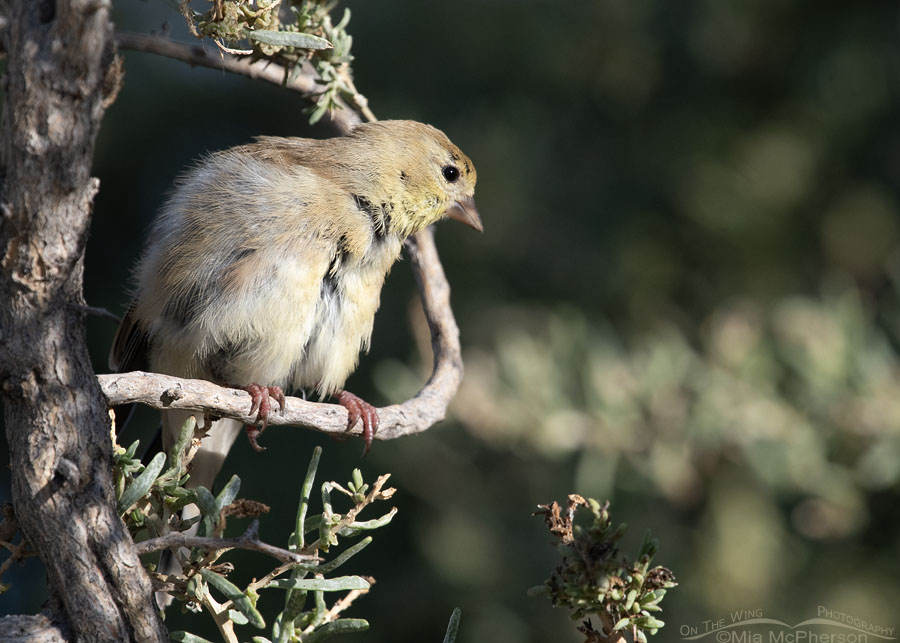When I was at Farmington Bay WMA last week, I had a chonky American Goldfinch fly in and land on a greasewood in front of me. Of course, I took photos of it.
 Chonky American Goldfinch – Nikon D500, f8, 1/1250, ISO 640, Nikkor 500mm VR with 1.4x TC, natural light
Chonky American Goldfinch – Nikon D500, f8, 1/1250, ISO 640, Nikkor 500mm VR with 1.4x TC, natural light
The goldfinch, in nonbreeding plumage, didn’t look chonky when it flew in, but it did shortly after landing. The finch began to fluff and preen and that is why it looks chonky.
“Chonky” is a playful term used for describing something, including birds and animals, as chubby, pudgy, or plump.
Some of the American Goldfinches I have been seeing look a touch bedraggled right now. This is because they are molting into their duller winter plumage. I don’t mind their messy appearance any more than they would mind seeing me first thing in the morning with my wild hair. Which is to say, not at all.
Since it has gotten cooler in the highest parts of the mountains, some of the American Goldfinches that have spent the summer in the high country may be headed for the warmer valleys.
It was fun to see both Lesser and American Goldfinches at Farmington Bay WMA last week. American Goldfinches are found throughout most of the U.S. and some parts of Canada and Mexico. Lesser Goldfinches are found primarily in the western U.S. and Mexico.
There are seeds on greasewoods that both finch species like to eat. Greasewoods also offer shelter from overhead predators, and as seen in my photo, a place to fluff and preen.
I hope to find Lesser and American Goldfinches feeding on wild and cultivated sunflower seeds in the upcoming weeks. In fact, I’m very much looking forward to that!
Life is good.
Mia
Click here to see more of my American Goldfinch photos plus facts and information about this species.


The word “Chonky”…scares me! I look like that all the time. If my daughters ever see this pic I’ll get a new nickname for sure. Great info and a typically wonderful shot. Thanks Mia.
Chonky was a new term for me. Love it. And the bird will look sleek when it has finished preening. I wish…
very chonky!
I enjoy your vast knowledge of birds and other wildlife as well as your beautiful photos.